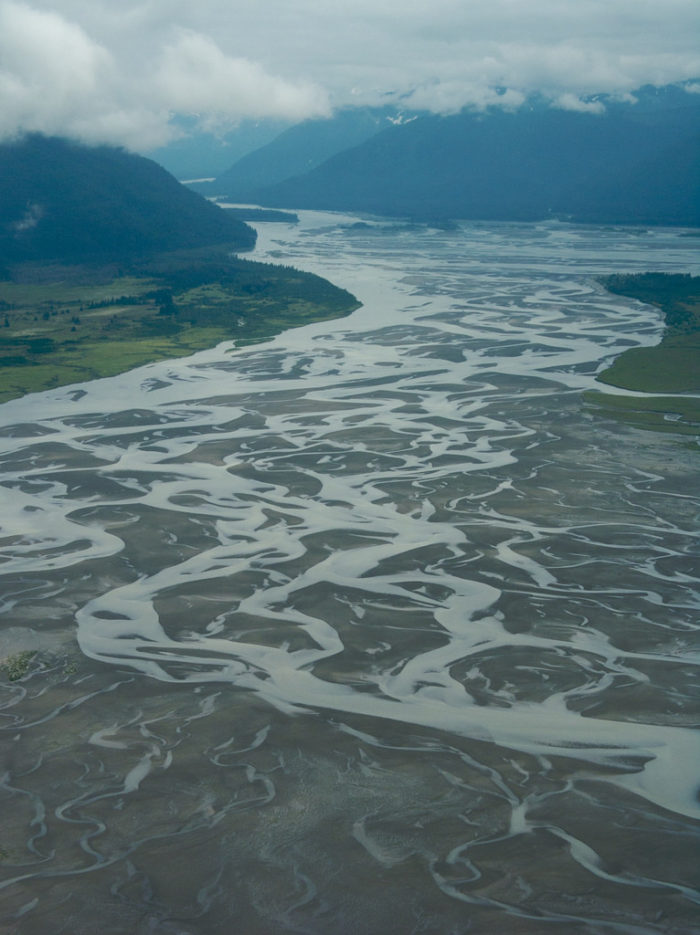
Death is one end’s new beginning. The river will die into the ocean, leaving behind its soul-the delta. It is a large expanse of silt, emergent plants, thousands of bird species, tidal fluxes that push water in and out so fast that kayaks can be swept away in the current and it is impossible for humans to paddle against the strength. The delta represents the entire journey of a river, mineral-laiden water from its canyon country, its humble mountain beginnings, minerals that will poor into the ocean and create the richest nurseries on the planet. These nurseries will birth the young of so many species.
The Stikine river creates a delta that spills more than 12 miles in length into the Inside Passage waters off the coast of southern Alaska. For years, I paddled through this delta with students, paying attention to the tide tables and time of day to make sure we would not go “dry” and have to sit in our boats for twelve hours until the water returned with the tide to carry us forward, or push us backwards. We would see sandhill cranes, phalaropes dancing in the wind, eiders, more species of waterfowl than we could count. We would see grizzly bears, chasing salmon with the incoming tides. On the Tongass National Forest, these wild rivers such as the Stikine provide the much needed nutrients of the forest to the near ocean environments. This creates an estuarine environment that supports all five native salmon species in the Pacific Ocean, as well as the giant trees that give the region its name and reputation.
Often, when we think of rivers, we think of the life within them in the moment. We see the rush of water over a falls, the character of the water carved into a cavernous canyon landscape. We challenge ourselves with the paddle. But it is at the end of each river’s journey where the life begins anew. It is here, in the delta, where one waterway ends and another begins, where the end becomes the beginning.
